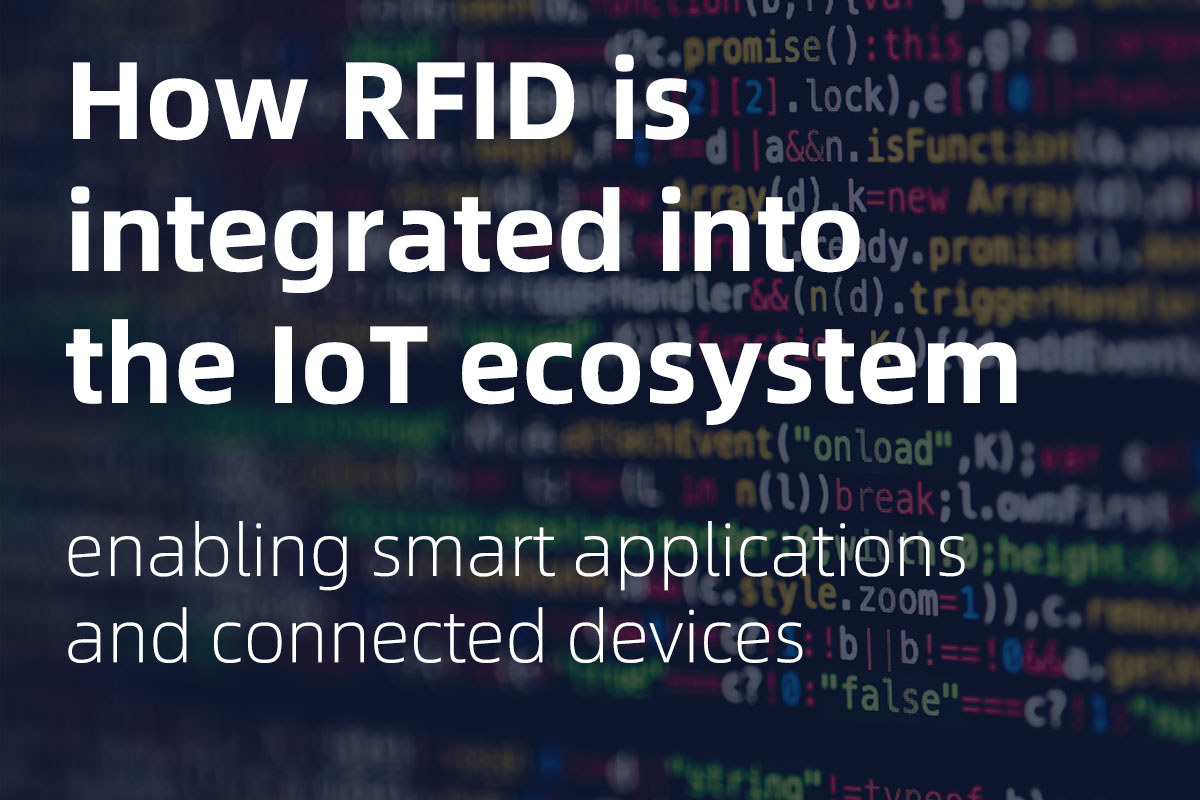Your location: Home Page > RFID Blog | SILION TECH > How RFID is integrated into the IoT ecosystem, enabling smart applications and connected devices
News and Information
How RFID is integrated into the IoT ecosystem, enabling smart applications and connected devices
Author:2023-09-27 16:29:11
In today's digitally driven world, the Internet of Things (IoT) has emerged as a transformative force. It's all about connecting everyday objects to the internet, making them "smart" and enabling them to communicate and share data. One crucial technology playing a pivotal role in this IoT revolution is RFID, short for Radio-Frequency Identification. In this article, we'll explore how RFID is seamlessly integrated into the IoT ecosystem, powering smart applications and connected devices.

Let's start with the basics. RFID is a technology that uses radio waves to identify and track objects. It consists of two main components: RFID tags and RFID readers. Tags, which can be as small as a grain of rice, contain unique information that can be read by RFID readers when they come into proximity. This information is then transmitted to a central system for processing.
At first glance, RFID and IoT might seem like separate entities, but they are increasingly intertwined. IoT thrives on data, and RFID provides a convenient and efficient way to gather real-time data from physical objects. Here's how RFID seamlessly integrates with IoT:
IoT applications often rely on the continuous collection of data from various sources. RFID tags serve as sensors, gathering information about the objects they are attached to. For instance, in a smart warehouse, RFID tags on inventory items can transmit data about their location, quantity, and condition in real-time.
Asset management is a key use case for both RFID and IoT. By combining RFID's tracking capabilities with IoT's data processing capabilities, businesses can gain unprecedented visibility into their assets. This is invaluable in industries such as logistics and healthcare, where knowing the exact location and status of assets is critical.
Retailers and manufacturers can leverage RFID for smarter inventory management. RFID-tagged products can "talk" to the IoT system, informing it when they are running low or when they are about to expire. This real-time data helps in optimizing stock levels and reducing waste.
IoT, powered by RFID, can revolutionize the supply chain. RFID tags on packages and shipments provide real-time tracking information, allowing companies to monitor the movement of goods from the manufacturer to the end consumer. This transparency leads to better decision-making and increased efficiency.
IoT security systems can benefit from RFID technology. Access control systems, for example, can use RFID tags to grant or deny access based on the identity of individuals. These systems can be configured to automatically lock or unlock doors when authorized personnel approach.
Retailers are increasingly turning to IoT and RFID to create smart shopping experiences. Smart shelves equipped with RFID readers can monitor product levels and even display personalized offers to shoppers based on their preferences and past purchases.
While the integration of RFID into the IoT ecosystem holds immense promise, there are some challenges and considerations to keep in mind:
The constant collection of data by IoT devices raises privacy concerns. Businesses must be transparent about the data they collect and how it's used to maintain customer trust.
IoT systems can become complex as they grow. Ensuring that RFID tags and readers are scalable and can handle increasing data volumes is crucial.
For seamless integration, RFID and IoT devices must be compatible with each other. This requires careful planning and standardization.
With more devices connected, the attack surface for potential hackers expands. Robust security measures are essential to protect sensitive data.
To truly grasp the impact of RFID in the IoT world, let's explore a couple of real-world examples:
In agriculture, RFID-enabled IoT devices are revolutionizing farming practices. Farmers can attach RFID tags to livestock, allowing them to monitor the health and location of their animals in real-time. RFID sensors in soil can provide data on moisture levels, helping optimize irrigation. The result is higher yields and more sustainable farming practices.
In healthcare, RFID in IoT is improving patient care and hospital operations. Hospitals can track the location of medical equipment, ensuring that it's readily available when needed. Patient wristbands with RFID tags can be used to match patients with their records and medications accurately. This enhances patient safety and streamlines workflows.
RFID's integration into the Internet of Things is a game-changer. It brings real-world objects into the digital realm, enabling a wealth of smart applications and connected devices. From asset tracking and inventory management to enhanced security and personalized retail experiences, RFID in IoT is transforming industries across the board. While challenges exist, the potential benefits are too significant to ignore. As technology continues to advance, we can expect even more innovative applications that harness the power of RFID in the IoT ecosystem. It's an exciting journey that promises to make our world smarter and more connected than ever before.
Next Article:Barcode vs. RFID: A Comparative Analysis